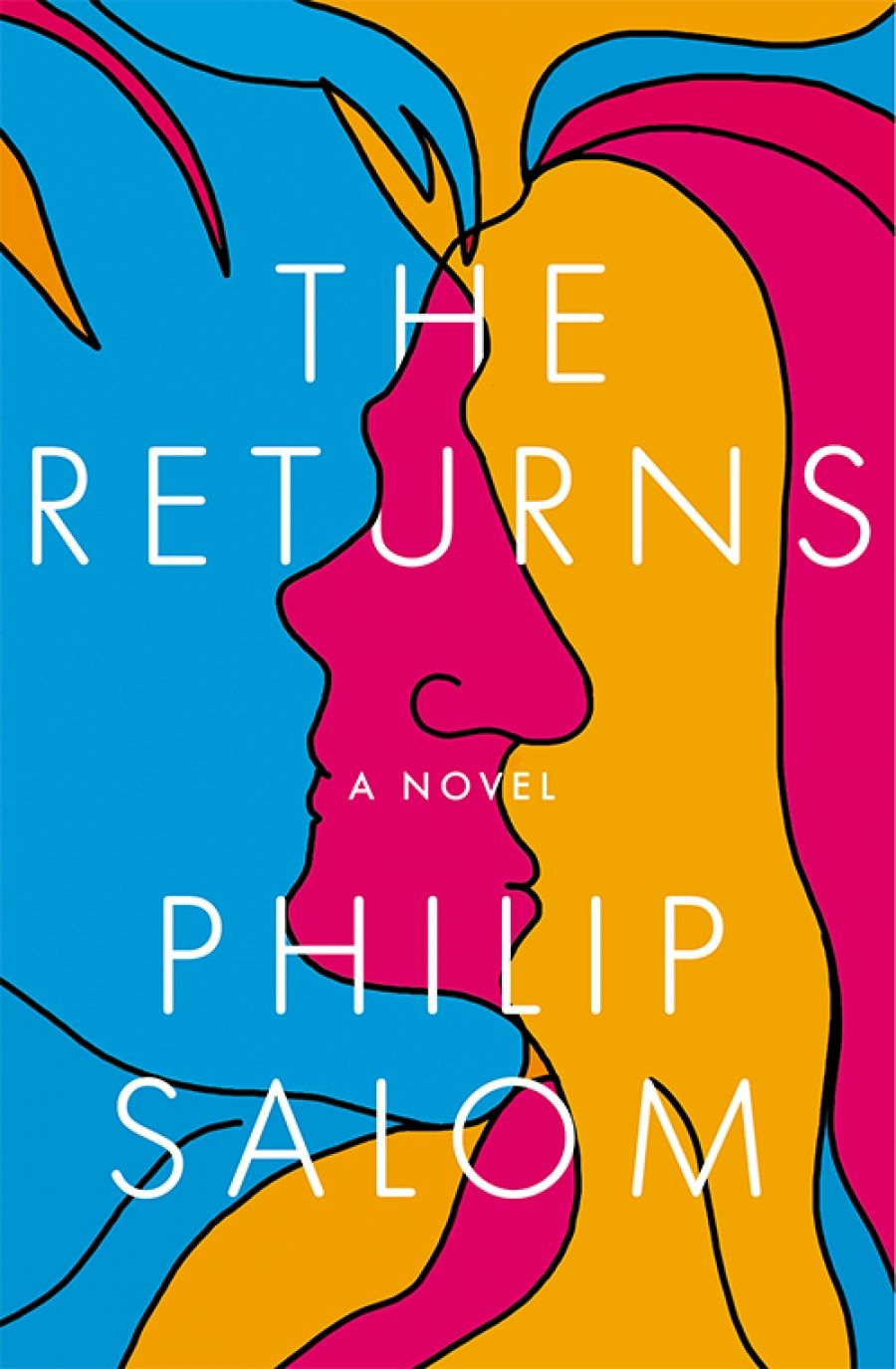
- Free Article: No
- Contents Category: Fiction
- Review Article: Yes
- Online Only: No
- Custom Highlight Text:
A bookseller, Trevor, sits in his shop in Melbourne making conversation with his customers: an exasperating mixture of confessional, hesitant, deranged, and disruptive members of the public. One man stalks him, armed with an outrageous personal demand; another tries to apologise for assaulting him. The apology is almost as unnerving as the attack ...
- Grid Image (300px * 250px):

- Alt Tag (Grid Image): Brenda Walker reviews 'The Returns' by Philip Salom
- Book 1 Title: The Returns
- Book 1 Biblio: Transit Lounge, $29.95 pb, 324 pp, 9781925760262
Trevor’s bookshop and the editor, Elizabeth, allow Salom a rich field for literary commentary. Trevor has a student clientèle and he offers, somewhat discordantly, ‘Family sagas, latest fiction, [and] Marxist theory’. He has self-help books, which, in his view, have a ‘placebo effect’. He indulges customers who say things like, ‘Books are so totally true’. Memoir is popular, as is home renovation. He recommends Karl Ove Knausgård and Patrick White. He puts up with ridicule from his ex-wife, who accuses him of being unsociable: ‘sitting by yourself all day in the dark like a book’. When he does circulate, at her birthday party, things don’t go well for either of them. He thinks that books are ‘controlled hallucinations’; he is a steady, self-assured character, whose deep beliefs have to do with the dynamic act of painting. His source of creativity is not writing, as we might expect, but visual art: montage and paint. Painting, for Trevor, is a way of ‘carrying the past out and dumping it on the median strip’. But it also provides a record of the faces he has seen in the city, and even though his canvases might seem like ‘oddments from a Salvo’s store’, they have considerable impact on the people who view them. Trevor, whose ‘life has stalled’, registers his own renewal through paint and is also revived by art and by his responses to the tragedies of his past and the possibilities of his future.
Trevor takes a room in Elizabeth’s house, and we witness the beginning of a dance between two very different characters. Reaching out to Elizabeth as she is fainting, he ‘looks like the guy holding the ballerina’. Physically slight Elizabeth leads a settled life with a house, a dog, and a grumbling and difficult neighbour. Her work involves a kind of self-effacement. Good editing is invisible but significant. ‘She never lets authors know how ferally invigorating she finds her job. When she thinks up phrases to embolden the anxious types who brood too little and drink too much. There are a lot of them. Whether they write too much or write too little they agonise with a sad intensity over their words and over writers who are feted.’ Through Elizabeth, Salom comments on the vacuity of a book-award ceremony where Elizabeth’s shortlisted author is ‘ghosted’ in favour of the winner, and the joy of being assigned an author with an interest in the destructive world Elizabeth inhabited as a child. In the end, frail Elizabeth, who ‘knows herself as an inner voice and being’, is the most constructively assertive character in the novel.
The Returns is rich with character and change and an understanding of its Melbourne setting. Melbourne is a city of sudden storms, overpriced renovations, and pitiful homelessness, but Trevor, on the way back from a disastrous party, notices ‘a strange light over the city’ and registers the effect of the light: ‘something has changed, shifted, from banality to beauty’.
Character and place in a state of modest redemption: these are the hallmarks of the traditional novel, and The Returns offers all the satisfactions of tradition, with plenty of humour and generosity and a certain insight into the way that painting and reading might function. Painting, according to Elizabeth, is ‘all there at once, at attention’, yet
you read one sentence at a time, running page by page, linear. These moments are fairly seamless, like consciousness is, moving forwards in time. You comprehend its cause and effect and coherence. Whenever you pause, or put the book down, the awareness of what came before returns into awareness. Reading is always this elegant moving forward then catching up. It accretes.
Elizabeth is predisposed to reading rather than painting. This is a metatextual moment in a novel that jokes about the publishing industry and reveals the limitations of conventional exhibitions for an unknown artist like Trevor, while exploring love and connection, including textual connection, with great seriousness.



Comments powered by CComment